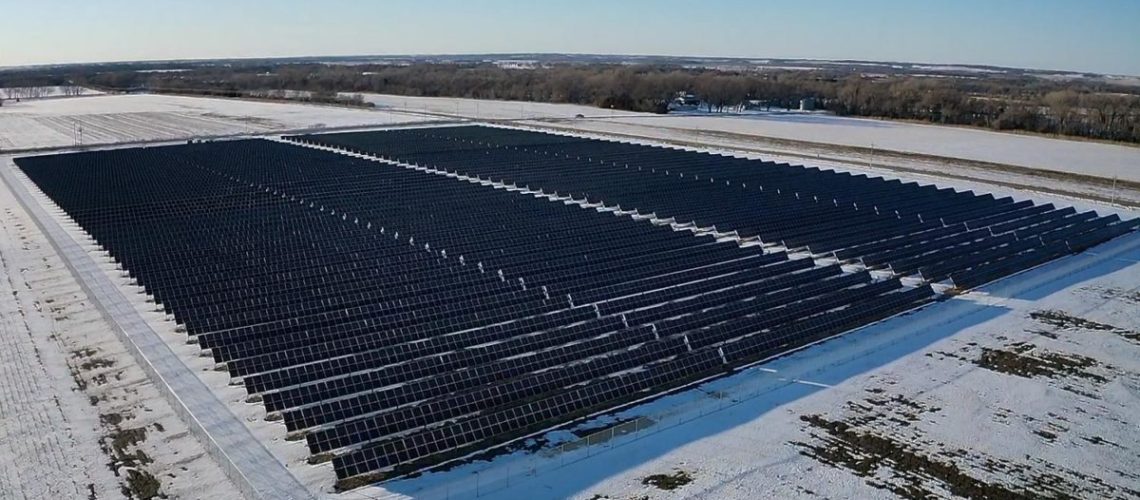The U.S. Department of Agriculture is offering funding from the Rural Energy for America Program (REAP) to farmers, ranchers and other rural market end users such as tribal organizations to fund $1 million for clean energy projects, and $500,000 for energy efficiency upgrades.
The advent of agricultural practices of growing crops and grazing animals under and between solar arrays, whose combination has been called agrivoltaics, has spurred a green thumb in the mind of many this year, and now federal funding is on the way.
Starting April 1, the U.S. Department of Agriculture (USDA) is accepting applications for $1 billion in grants to help agricultural producers and rural small businesses invest in renewable energy systems and make energy-efficiency improvements. The USDA is making grant funding available under the Rural Energy for America Program (REAP), with funding from the U.S. Inflation Reduction Act, the largest-ever investment in combatting the climate crisis in the country.
REAP is a funding mechanism aimed at bolstering off-grid resiliency and energy efficiency projects on agriculture sites. Recipients may use REAP funding to install on-site renewable energy systems such as ground-mounted solar systems and battery storage, or to make energy efficiency improvements. The USDA will hold quarterly competitions through Sept. 30, 2024 for REAP participants.
The REAP program also includes a separate funding tier to support under-utilized technology, with $144.5 million available.
The federal farming agency is particularly interested in energy projects that will help rural communities recover economically with improved infrastructure, reduce climate pollution and increase energy resilience amid climate change. Secondly, the REAP program is designed to support the conservation of American farmland, while investing in underserved communities.
The REAP program is part of the Biden-Harris Administration’s Justice40 Initiative, which aims to ensure that 40% of the overall benefits of certain Federal investments flow to disadvantaged communities that are marginalized, underserved and overburdened by pollution.
To ensure that small projects have a fair opportunity to compete for funding, USDA has set aside at least 20% of the available funds until June 30 of each year for grant requests of $20,000 or less, including the grant portion of a combined grant and guaranteed loan request.
The maximum share of REAP funding which may be requested is up to 50% of the total project cost for energy efficiency projects and renewable energy systems. An award of up to 50% of the total project cost is also available for any project in a designated energy community and/or submitted by an eligible tribal entity. All other projects are eligible to apply for grants of up to 25% of the total project cost.
The maximum grant is $1 million for renewable energy systems and $500,000 for energy efficiency projects under the REAP program. For additional information on application deadlines and project submission details, see page 19239 of the March 31 Federal Register.
Rural applications
Speaking to pv magazine USA in January, Bram Walters, chief executive officer of SunVest Solar, said his firm is focused on developing solar projects for farming communities that aim to take advantage of federal funding from the IRA, including the USDA’s REAP program.
SunVest’s 8 MW Elkhorn project portfolio, which consists of three community solar projects for the Elkhorn Rural Public Power District in Battle Creek, Neb., is an example of a project that could qualify for adders under the IRA that promote the development of distributed generation assets in regions of stranded grid transmission and distribution capacity, Walters said.
Assets such as Elkhorn, which received funding from the USDA’s Rural Utilities Service (RUS) program, a loan forgiveness program tied to farming projects, under which projects can qualify for different federal incentives such as RUS and certain IRA adders, while alleviating the need of the offtake counter-party or utility from having to make a costly T&D upgrade, he said. The RUS electric program provides funding to support demand-side management, energy efficiency and conservation programs, plus on-and off-grid renewable energy system deployments to rural customers.



